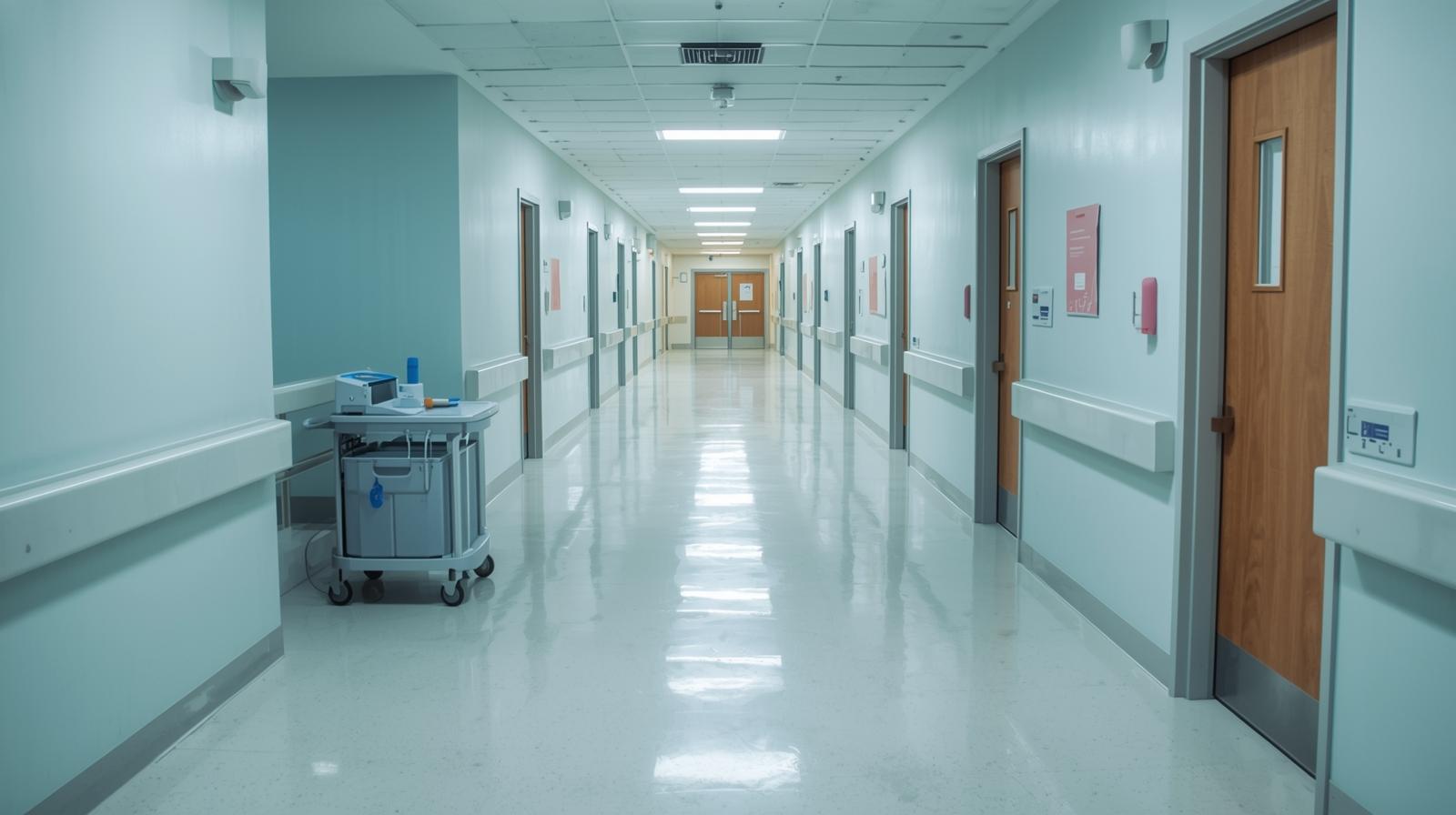Health
Background for Hospital
Published
3 weeks agoon

A hospital is one of the most vital institutions in any society. It serves as the backbone of public health, offering medical care, preventive services, and health education to people in need. Understanding the background for hospital helps us appreciate how healthcare evolved, how hospitals operate today, and what their role means for future generations.
The Origin and Early Development of Hospitals
The idea of a hospital is not a modern creation. In ancient times, religious temples often acted as healing centers where people came for both spiritual and physical recovery. The Greeks and Romans built structures called “valetudinaria” to care for soldiers and the sick. Later, during the Middle Ages, monasteries provided shelter and medical help to travelers and the poor.
By the 18th and 19th centuries, the hospital system began to transform. Cities started building public hospitals to meet the needs of growing populations. These facilities became more organized and began focusing on cleanliness, medical research, and specialized treatments. The foundation of modern hospitals was laid through discoveries in microbiology, antiseptics, and surgical techniques.
The Role of Hospitals in Modern Society
In today’s world, hospitals are no longer just places for emergency care — they have become centers of innovation, teaching, and technology. The background for hospital includes a long journey from small community facilities to vast medical networks serving millions.
Hospitals today play a key role in:
- Providing critical care and surgeries
- Offering preventive health programs
- Conducting research and medical trials
- Training doctors, nurses, and specialists
Modern hospitals also emphasize patient rights, comfort, and accessibility. They are equipped with advanced diagnostic machines like MRIs, CT scanners, and robotic surgical systems, which make treatments faster and more precise.
Types of Hospitals and Their Specializations
Not all hospitals are the same. The background for hospital includes a variety of models and specializations designed to meet different healthcare needs. Some major types include:
General Hospitals
These hospitals handle all kinds of medical cases, from injuries to chronic diseases. They have departments like surgery, maternity, emergency, and internal medicine.
Specialty Hospitals
These are focused on specific areas such as cardiology, oncology, orthopedics, or neurology. They provide expert care and advanced technology tailored to their specialty.
Teaching Hospitals
Usually linked with medical universities, these hospitals not only treat patients but also train medical students and conduct research.
Community Hospitals
These serve local areas, offering essential care without the large infrastructure of major city hospitals.
Children’s Hospitals
These focus entirely on pediatric care, ensuring that infants, children, and teenagers receive medical attention suited to their age and conditions.
Hospital Design and Infrastructure Background
The background for hospital architecture has evolved dramatically over time. Early hospitals were simple buildings with basic wards, but modern facilities are designed for efficiency, hygiene, and patient comfort.
A well-designed hospital includes separate zones for patients, doctors, and visitors. It must have proper ventilation, natural light, emergency exits, and infection-control systems. The design also considers accessibility for people with disabilities.
In recent years, “green hospitals” have become a trend — built with eco-friendly materials, solar power systems, and water recycling facilities. This move toward sustainability reduces operational costs and promotes environmental health.
The Role of Technology in Hospitals
Technology has revolutionized the healthcare industry. From patient data systems to robotic surgeries, hospitals now rely on advanced tools for efficiency and safety.
Key technologies used in hospitals include:
- Electronic Health Records (EHRs) – for tracking patient information
- Telemedicine – for remote consultations and follow-ups
- AI-assisted diagnostics – for faster detection of diseases
- Wearable health devices – to monitor vital signs in real-time
The background for hospital also involves cybersecurity and data protection. Hospitals handle sensitive patient data, making security systems essential to prevent breaches and maintain trust.
Staffing and Management in Hospitals
A hospital functions smoothly because of its diverse and skilled workforce. Each role is crucial to patient care and administration. The main departments include:
- Medical staff: doctors, surgeons, and specialists
- Nursing staff: nurses, aides, and caregivers
- Administrative staff: managers, receptionists, and finance officers
- Support staff: cleaners, technicians, and security personnel
Hospital management ensures that all departments work in harmony. They oversee budgets, quality control, and compliance with healthcare regulations. Without proper administration, even the best-equipped hospital can face challenges in delivering effective care.
Funding and Economic Background for Hospital
Running a hospital is expensive. Funding often comes from a mix of sources — government grants, private investors, insurance reimbursements, and patient fees. Public hospitals rely mostly on government support, while private hospitals depend on business models, partnerships, or donors.
In many countries, insurance systems play a huge role in how hospitals operate. Patients with coverage can access treatments more easily, while those without insurance may struggle to afford advanced care.
Additionally, many hospitals participate in community health programs, offering free check-ups or vaccination drives, funded by charitable organizations or local health authorities.
The Importance of Hygiene and Patient Safety
One of the most critical parts of hospital background is infection control. Hospitals must maintain the highest standards of cleanliness to prevent the spread of diseases. Sterilization, waste disposal, and isolation wards are essential parts of this process.
Patient safety also includes clear communication, proper medication management, and regular monitoring. Modern hospitals use barcode systems and digital records to reduce errors in prescriptions and treatments.
Future of Hospitals: Challenges and Innovation
The background for hospital continues to change as global health challenges grow. The rise of chronic diseases, aging populations, and pandemics has pushed hospitals to adapt quickly.
Future hospitals will focus more on:
- Personalized medicine – tailoring treatment to genetic profiles
- Remote care – treating patients through digital platforms
- Sustainability – reducing waste and energy consumption
- Mental health integration – combining physical and emotional care
Hospitals must also address issues like staff burnout, long waiting times, and healthcare inequality to create a more inclusive system.
Education and Training in Hospital Systems
Medical education is another key part of hospital history. Teaching hospitals play a central role in training the next generation of healthcare workers. Through internships and residencies, students learn how to handle real-life cases under expert supervision.
Workshops, continuous medical education (CME) programs, and digital learning platforms ensure that healthcare workers remain updated with the latest medical advancements and safety protocols.
Community Impact of Hospitals
Hospitals are more than just treatment centers — they are community anchors. They support local economies by creating jobs, promoting health awareness, and improving quality of life.
Community hospitals often run outreach programs in rural areas, helping prevent diseases before they become widespread. Their presence builds trust between healthcare providers and citizens.
Historical Figures in Hospital Development
The background for hospital wouldn’t be complete without mentioning pioneers like Florence Nightingale, who revolutionized nursing during the Crimean War, and Louis Pasteur, whose discoveries in microbiology transformed infection control.
Their dedication laid the foundation for modern healthcare standards, emphasizing hygiene, scientific research, and compassionate patient care.
Final Thoughts
Hospitals are not just buildings; they are symbols of human compassion and scientific progress. The background for hospital tells a story of centuries of evolution — from small charity wards to global healthcare systems powered by technology and innovation.
As the world faces new medical challenges, hospitals will continue to adapt, combining science, empathy, and efficiency to improve lives everywhere.
FAQ
Q1: What is the main purpose of a hospital?
A hospital provides medical care, treatment, and rehabilitation to patients suffering from illness or injury.
Q2: How did hospitals begin historically?
Hospitals started as religious and charitable shelters for the sick and poor before evolving into structured healthcare institutions.
Q3: What makes a hospital successful?
A successful hospital combines skilled staff, modern equipment, good management, and a strong commitment to patient safety.

A Start-Up with Patient Medical Stories

2 Story 2 Car Garage

100 Orange Juice Skip Opening Story

The Transformative Power of Technology in the Modern World

2 Year Mother’s Day Clothes: Adorable Styles to Celebrate the Day in Comfort and Joy

14th Century Clothing: A Detailed Look at Medieval Fashion and Style

Money Storm Slot Game: Where Every Spin Brings the Thrill of Fortune

Triple Double Diamond Free Games Slots: Classic Casino Fun with Big Wins

Best Running Trainers for Shin Splints: Find Comfort, Support, and Relief

Best Hair Products for Shine: Get That Healthy, Glossy Look Naturally

101 Warren Street New York City: Luxury Living in Tribeca

4 Seasons Nail Salon: A Place for Beauty, Relaxation, and Self-Care

10 Provost St Jersey City: A Complete Guide to Modern Living

2222 Jackson Ave Long Island City: A Modern Living Destination

6 Train Express Stops: A Complete Guide for New York City Commuters

Can You Get a Doctor’s Note Without Being Seen? A Complete Guide

Bella Donna Hair Salon: A Blend of Style, Elegance, and Care

Align Doctor Login Everything You Need to Know in Simple Words

Cutting Hair Style A Complete Guide to Modern Trends, Techniques, and Ideas

1920s Paris Business Women: The Bold Voices That Redefined Feminine Power

A Start-Up with Patient Medical Stories

2 Story 2 Car Garage

100 Orange Juice Skip Opening Story

The Transformative Power of Technology in the Modern World

2 Year Mother’s Day Clothes: Adorable Styles to Celebrate the Day in Comfort and Joy

14th Century Clothing: A Detailed Look at Medieval Fashion and Style

Money Storm Slot Game: Where Every Spin Brings the Thrill of Fortune

Triple Double Diamond Free Games Slots: Classic Casino Fun with Big Wins

Best Running Trainers for Shin Splints: Find Comfort, Support, and Relief









